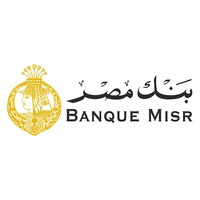
Banque Misr
Banque Misr (BM) was established in 1920 by the pioneer economist and financial expert Mohamed Talaat Harb Pasha, who spearheaded the concept of investing in national savings and directing them toward economic and social development. Thus, Banque Misr was established as the first wholly Egyptian-owned bank. Banque Misr has funded many businesses spanning across multiple domestic sectors, such as: textiles, insurance, transportation, aviation, entertainment, and filmmaking. Currently, BM owns shares in 157 companies across different fields, ranging from finance, tourism, housing, agriculture and food, and communication and information technology. A true pioneer in the region, Banque Misr became the first bank in Egypt and North Africa to comply with PCI data security standards, upon obtaining the latest version of the global Payment Card Industry Data Security Standard (PCI DSS 3.2.1) certification. Utilizing the latest technology in the banking sector, Banque Misr is constantly looking to expand customer access to banking services. Today, Banque Misr is proud to offer one of Egypt’s largest ATM networks, located across all areas of Egypt. Banque Misr’s role is visible in all economic fields due to its geographic outreach. The bank has more than 20,000 employees, serving a large base of more than 13 million clients in Egypt, with a total paid-up capital amounting to EGP 15 billion. The bank has more than 800 electronically integrated local branches located nationwide to provide the best and most accessible services to customers. Banque Misr also values its regional and international presence, which includes its five branches in the United Arab Emirates and one in France. In addition, the bank’s international presence includes subsidiaries in Lebanon and Germany, as well as representative offices in China, Russia, South Korea, and Italy and a global network of correspondents.






